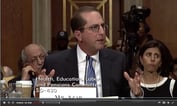General Electric’s multi-billion-dollar loss in a unit that sold long-term-care insurance (LTCI) is a blow from which the iconic company is still reeling. But it’s also a harbinger of a much greater challenge for society at large: paying to care for the growing number of Americans who can’t look after themselves.
GE’s travails stem from the early 1990s, when insurance companies began developing a new line of business, offering policies that, in return for regular premium payments, would cover the cost of a nursing home or other long-term care if the need arose. With the baby-boom generation approaching retirement, sales took off. By 2007, some 7 million policies were in force, generating almost $10 billion a year in premiums.
(Related: Maybe We’re All United Airlines)
The insurers miscalculated. Claimants lived longer than expected — perhaps because people prudent enough to buy the insurance were more careful about staying healthy. But longer lives meant more people needing long-term care. Medical costs rose, and investment returns fell short. To cover their obligations, companies had to increase premiums (as far as regulators allowed) and, like GE, take big charges against earnings. Penn Treaty was forced into liquidation, leaving policy holders to rely on meager state guaranty funds.
Tempting as it may be to blame regulators, that wouldn’t be fair. True, they could have allowed more premium increases sooner, and they should always demand that companies have ample equity to absorb losses. They’ll need to investigate GE’s accounting. But new insurance products are inherently risky, and companies are bound to make mistakes. Officials shouldn’t be expected to catch risks that actuaries can’t foresee.
Rather, the debacle illustrates a troubling truth: Private insurance can’t handle this problem by itself.








 January 30, 2018 at 06:04 AM
January 30, 2018 at 06:04 AM











